Fox 34 SL
Travel Options: 120 and 130 mm
Wheel Size Options: 29’’
Available Offset: 44 mm
Stanchion Diameter: 34 mm
Stated Weight (130 mm travel | Grip SL damper): 1,475 g
Blister’s Measured Weight (34 SL Factory | Grip SL damper | 130 mm travel | uncut steerer tube): 1,490 g / 3.28 lbs
MSRP:
- 34 SL Factory: $1,099 USD / $1,469 CAD
- 34 SL Performance Elite: $999 USD / $1,339 CAD
- 34 SL Performance: $649 USD / $869 CAD
- Twin Stick Remote: $149 USD / $199 CAD
Reviewer: 6’, 165 lbs / 183 cm, 74.8 kg
Bolted To: Trek Top Fuel
Test Duration: 3 months
Test Location: Washington
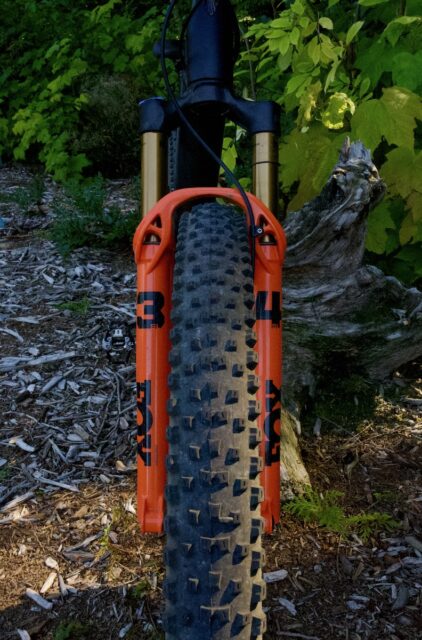
Intro
Fox’s incremental overhaul of their fork lineup continues with the launch of the new 34 SL. The 32 Step Cast sticks around as the shorter-travel, lighter XC race fork, with the 34 SL taking over from the 34 Step Cast as their more all-purpose XC race fork. Check out our review below, starting with a look at the design of the new 34 SL.
Design & Features
The biggest visual change to the 34 SL is that it doesn’t use the Step Cast lowers of the 34 SC that it replaces. The outgoing Step Cast design allowed Fox to make the stanchions more closely spaced than they are on a more conventional fork, and in doing so, remove material from the crown and lowers to save weight.
Forgoing the Step Cast lowers opened up room for Fox to increase the bushing overlap on the 34 SL by 20 mm as compared to the 34 SC, and bump up the maximum travel to 130 mm from the 34 SC’s 120 mm max. The additional space created by forgoing the Step Cast lowers also opens up room for a higher-volume air spring, which Fox says offers better small bump sensitivity than the more compact one used in the 34 SC. Tire clearance has been increased to a maximum width of 2.5’’ as well.
The new lowers on the 34 SL don’t follow the 32 Step Cast’s reverse arch design, but they do feature cutouts in the arch as first seen on the 32 SC. The bypass channels that Fox has been using on a number of their forks are still present on the 34 SL, which supposedly help move air and oil past the bushings for reduced pressure buildup in the lowers and better lubrication of the upper bushing and seals. In the case of the 34 SL, those have been moved to the inboard side of the lower legs where they see less stress under fore-aft bending; Fox says that update helps reduce friction in the system under those circumstances.
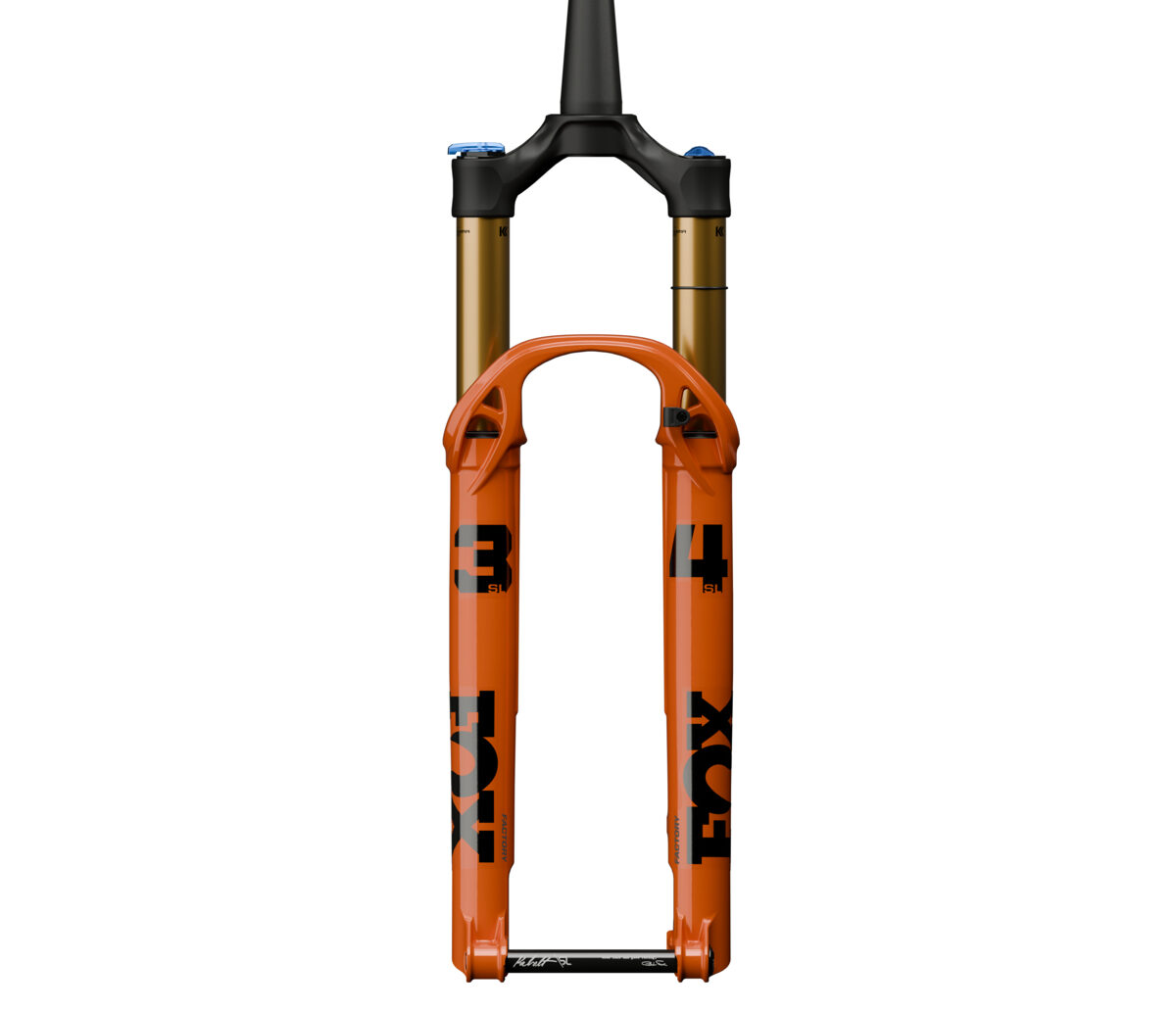
The 34 SL also gets a 180 mm native brake rotor mount and can be adapted up to a maximum of 203 mm; the 34 SC topped out at a 180 mm rotor, using a 160 mm mount. The stanchions are now spaced the same distance apart on the 34 SL as on the regular 34, though the 34 SL gets a new, lighter crown design. The crown is also now anodized rather than painted to save a few grams, and the damper-side stanchion is double-butted, which Fox says shaves another nine grams — an admittedly tiny amount, but those weight savings add up.
The 34 SL comes in at a fairly impressive stated weight of 1,475 grams (130 mm travel, Grip SL damper). For reference, that’s about 50 grams heavier than the outgoing 34 SC, but 210 grams lighter than the standard 34 with the heavier Grip X damper (the Grip SL isn’t offered in the standard 34). Despite the modest weight gain over the 34 SC, Fox says that the 34 SL is 17% stiffer torsionally; fore-aft stiffness numbers aren’t cited.
The 34 SL is offered with either the Grip SL or Grip X dampers in the Factory and Performance Elite versions, or with the more basic Grip damper in the Performance version. The Grip X damper will only be available in the 130 mm travel 34 SL, while the Grip SL one will be offered across the full travel range.
[For a lot more on the Grip SL and Grip X dampers that Fox launched last year, check out our First Look on those.]

As per usual for Fox, the Factory Series forks get gold Kashima-coated stanchions and several finish options for the lowers; the Performance Elite ones use black stanchions and matte black paint on the lowers, but are otherwise functionally equivalent. Both share a lighter Kabolt SL axle, while the Performance Series fork gets a more basic axle and the less sophisticated Grip damper.
Twin Stick Remote
To go along with the new 34 SL, Fox is launching a new combined dropper lever and remote lockout actuator, which they’ve dubbed Twin Stick. It’s compatible with two- or three-position lockout systems and can be configured to control a fork only, shock only, or both in unison. A single ratcheting paddle controls the lockout, with a second covering dropper post duties. The Twin Stick is available separately and comes in at a stated weight of 66 grams (remote only) or 76 grams with a 22.2 mm bar clamp.
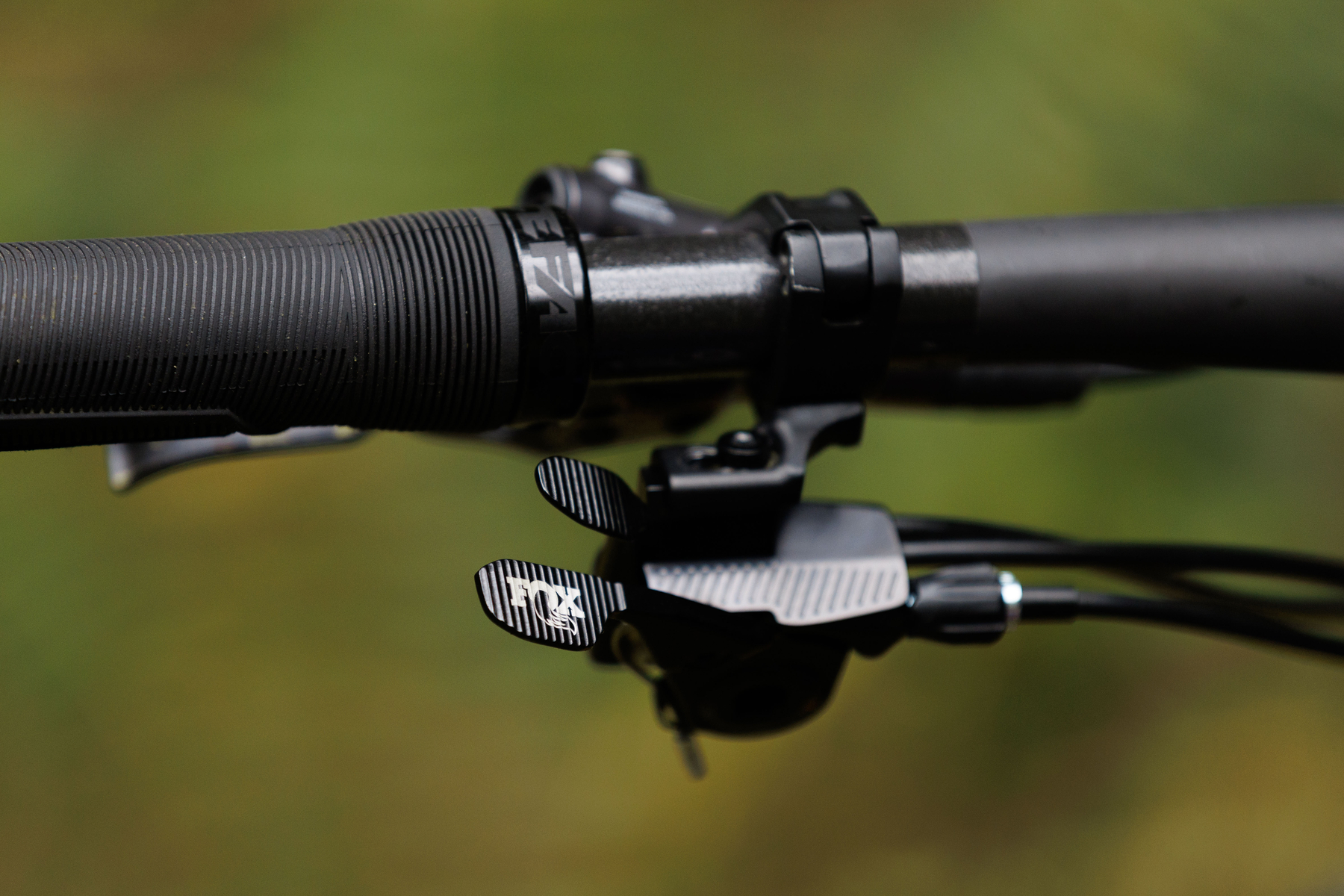
FULL REVIEW
Fox reshuffled their fork lineup earlier this year, with the Fox 36 gaining a new, lighter sibling in the 36 SL. The Fox 34 family, on the other hand, has been pared down to just the new 34 SL, which aims to merge the stiffness traits of the prior 34 with the more race-focused weight target of the discontinued 34 Step Cast.
So is this a case of zero compromise? As with most things, it’s a bit more complicated than that. Let’s dig into how the 34 SL performs, including both the Grip SL and Grip X-equipped versions.
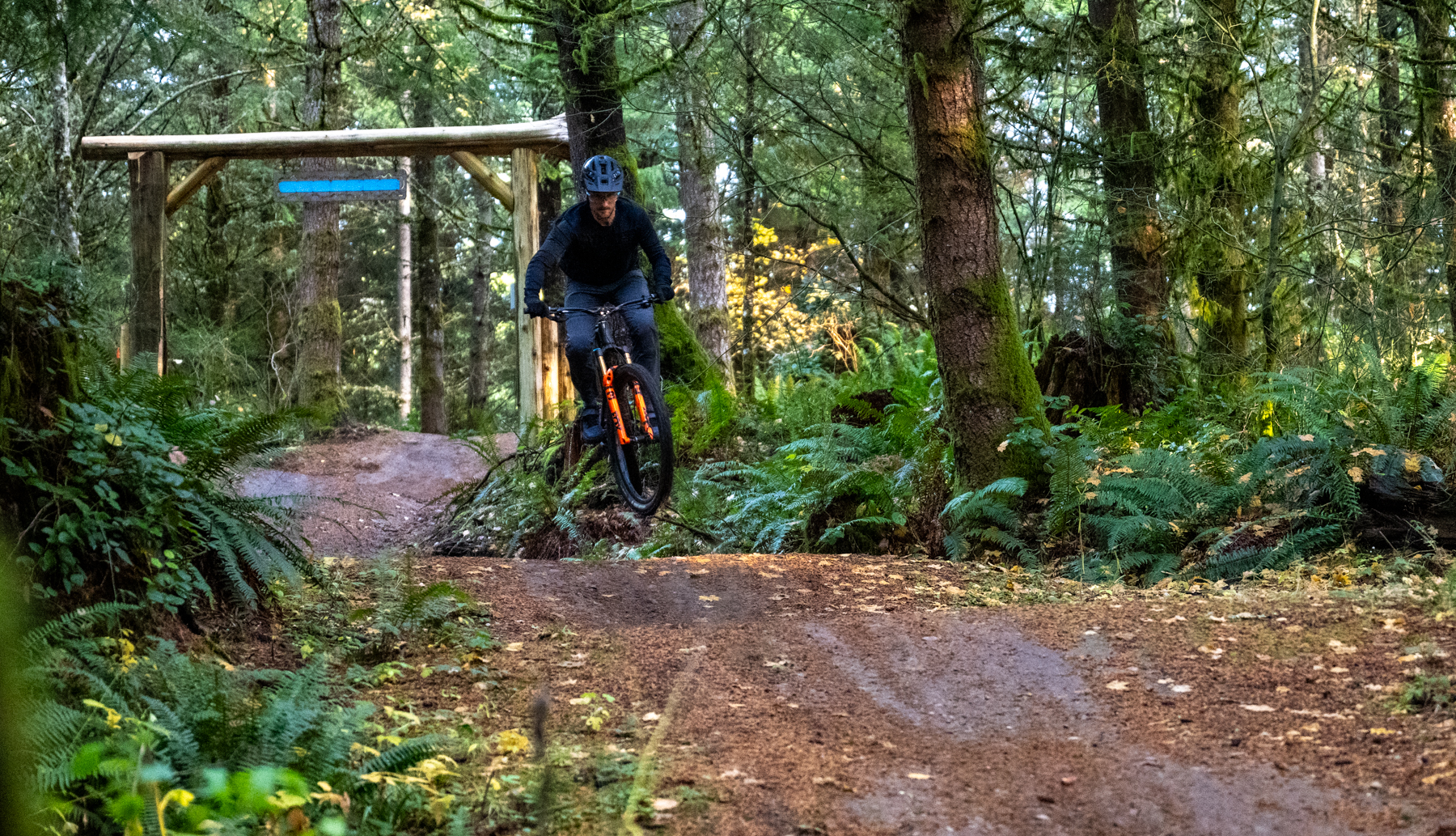
Setup
We started off testing the 34 SL in its lightest, shiniest form — a Factory version with orange lowers and the lighter, race-focused Grip SL damper. In prioritizing weight savings, the Grip SL damper is unsurprisingly fairly simple, with a three-position compression adjustment ranging from fully open to nearly locked out. Following the race-focused theme, the three-position adjuster is also compatible with Fox’s Twin Stick remote, which allows toggling between all three compression modes.
While I didn’t have much issue finding a rebound setting that worked well for me, I found the fully open compression setting to feel a bit underdamped, while the middle one felt like it introduced a bit more low-speed damping than I’d like, introducing some harshness on smaller bumps. I ultimately preferred the middle setting for its added support overall.
One of the big selling points of the new 34 SL’s more conventional casting design over the tapered legs of the prior 34 Step Cast is the larger-volume air spring that it allows. While I haven’t ridden the 34 Step Cast, I can say that the 34 SL’s air spring feels quite supple and sensitive for a fork targeting the weight-conscious XC crowd. It doesn’t follow the new GlideCore design implemented in the new 36 range, likely down to the 34 SL’s emphasis on weight savings.
As I mentioned in my Flash Review, I ended up pulling out all of the volume spacers and running well over the recommended pressure (about ~10 PSI beyond the higher end of the recommendation for my weight range), which helped to keep the fork riding higher in the midstroke without introducing too many compromises in terms of small bump sensitivity. While I often find myself running more pressure than recommended in both RockShox and Fox’s recent forks, the 34 SL felt like it particularly benefitted from the extra pressure in part due to the performance of the Grip SL damper (more on that later).
The 34 SL is also available with the heavier, more adjustable Grip X damper, which offers separate high-speed and low-speed compression adjustments rather than the Grip SL’s three-position arrangement. That leaves a bit more to tinker with in terms of setup, but also provides a far wider range of adjustment options, along with other benefits (and drawbacks) that we’ll get into in the damper comparison below.
On-Trail Performance
Picking up the 34 SL for the first time was a “holy shit” moment, first for how impressed I was by the low weight, and also for how nervous I was at the prospect of rallying it through some rougher, steeper terrain. Could a fork weighing just over three pounds really hold up to proper riding, or would it be a noodly mess?
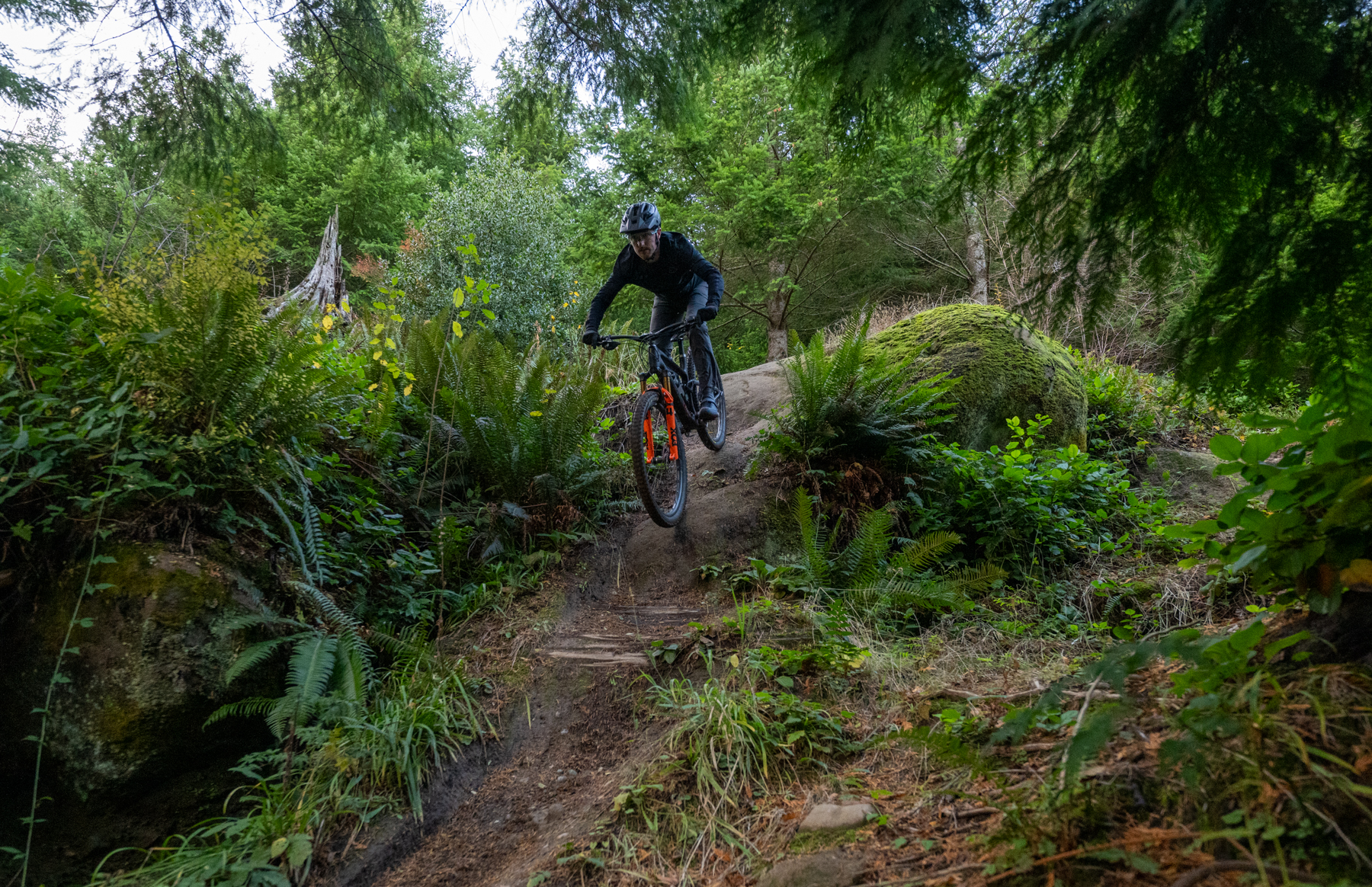
Starting with the chassis, I am incredibly impressed by what Fox has pulled off with the 34 SL. While the prior 34 was hardly a beacon of torsional or (especially) fore-aft stiffness, it could still be ridden decently hard, and that remains true of the substantially lighter 34 SL. On flatter terrain, while climbing, and even on smoother descents, the 34 SL feels entirely adequate in its stiffness, while also being quite impressive in its sensitivity. At least to me, it feels almost indistinguishable from the outgoing 34 in that regard, despite its significant weight reduction.
The Fox 34 SL is the lightest fork I’ve ridden on an XC bike, and while I don’t pay all that much attention to fork weight on burlier bikes, the flyweight feel that the 34 SL lends to my already energetic Trek Top Fuel is addictive. The steering feels lighter and more responsive, the front end is slightly easier to pick up on technical climbs, and that all adds up to a feel that encourages high-output riding. When considering the intentions of an XC racer or someone inclined to put down hard efforts and cover lots of miles, I’d say that’s just what that sort of rider is looking for.
Of course, there are compromises, and like the old 34, the 34 SL starts to show some limitations under heavy braking, repeated hits, or larger compressions. It can feel a little soft in torsion when trying to hold a line in rougher terrain, deflecting a bit more easily than I’d like, but the more noticeable sensation is the fore-aft flex, which can feel pretty unnerving in tricky situations, sometimes feeling like the fork starts to “tuck” under the bike rather than absorbing bigger hits. Those downsides magnify as speeds pick up, especially on trails with sustained steep, rough bits.
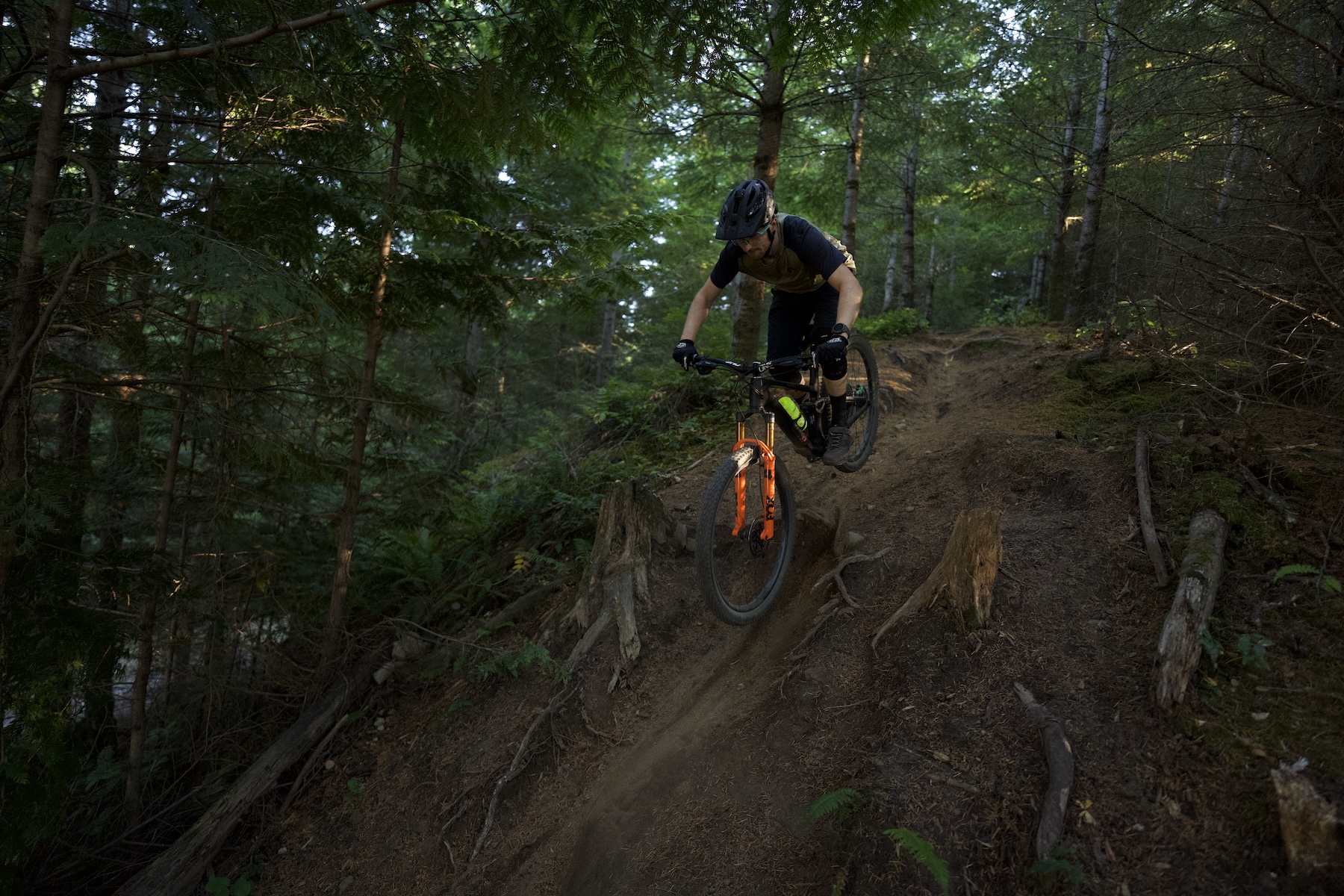
Again, we’re talking about a very lightweight XC fork here, though. While it could be argued that the 34 SL straddles the Trail category as well, the 34 SL is primarily positioned for folks who prioritize weight savings and efficiency over descending performance. For riders who want more confidence in rough terrain, the 36 SL delivers notably higher stiffness, particularly fore-aft, at a roughly 300 gram weight penalty over the 34 SL with the Grip SL damper.
The 34 SL’s air spring was also nicely tuned for my tastes. Smaller-volume air springs can feel like they ramp up aggressively towards the end of the travel, but despite the 34 SL’s limited stanchion diameter, Fox has managed to create a supple air spring that feels adequately supportive. As I mentioned in the Setup section above, I removed the volume spacers and increased pressure beyond the recommendation for my weight to maximize midstroke support, but I suspect that is also overcoming some shortcomings with the Grip SL damper.
Which brings us to:
Grip SL vs. Grip X Dampers
While our test fork came with the Grip SL damper, we had a chance to test a 34 SL with the Grip X damper on the Salsa Spearfish that we reviewed this summer — and there’s a considerable difference between the two when it comes to performance.
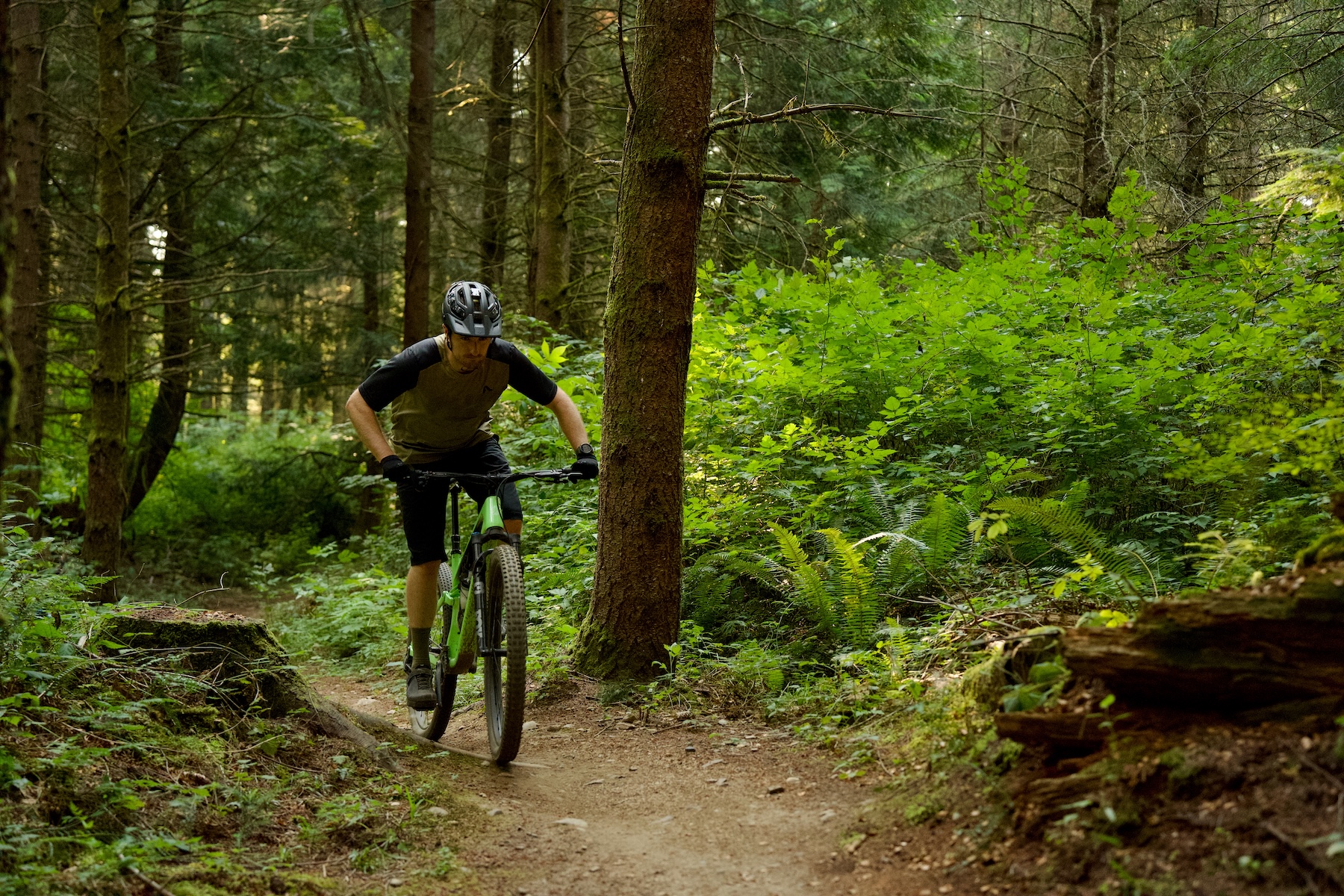
Formerly only available in the 34 Step Cast and 32 series forks, the Grip SL damper puts a premium on weight over all else. Fox says the new Grip SL damper undercuts the old Fit 4 damper by about 60 grams, with smaller proportions throughout to keep things as svelte as possible. The three-position switch’s Open, Middle, and Firm modes are quite distinct in their feel, with the open mode feeling rather lightly damped, yet forgiving, while the middle mode ramps up a significant amount of additional low-speed compression damping. Firm is, well, quite firm, and I don’t find myself using lockouts (or near-lockout, in this case) very often.
While I appreciated the forgiving feel of the Open mode on smoother terrain or when I’m tired and looking for extra forgiveness, I found the damping levels to be too light for bigger hits and faster riding. High-speed compression in particular seemed notably light, with the fork feeling eager to plunge through its travel even as I increased air pressure. The Middle setting proved to be a better option, offering a bit more support, but what I seemed to gain in much-needed high-speed compression support came with a heavier dose of low-speed compression than I would like. The Middle setting still feels digressive, meaning that it has lots of low-speed support matched with softer high-speed, and while I was willing to take that tradeoff for a bit more support on rough trails, it still necessitated a higher-than-recommended air pressure to hold the fork up in the middle of the travel.
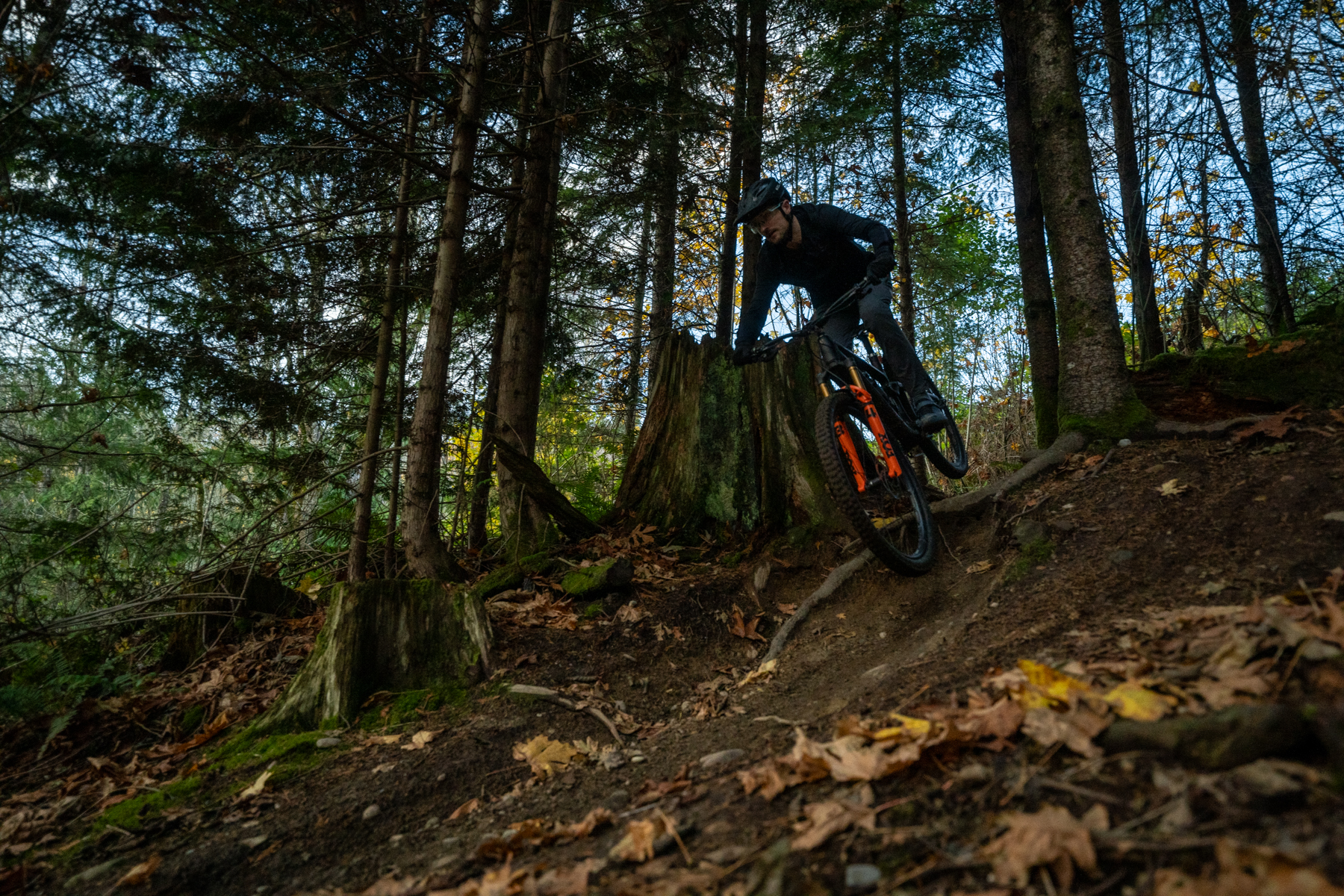
While it didn’t necessarily work well for my preferences or use case, that tuning philosophy makes a lot of sense for the 34 SL (and Grip SL damper’s) intention of being raced. Especially with the bar-mounted Twin Stick remote, racers can quickly access maximal pedaling support in the Middle and Firm settings, while the Open mode offers lots of forgiveness to help manage fatigue.
The other downside that comes with prioritizing weight savings in suspension comes in consistency. Oil is heavy, and while reducing its volume helps to cut weight pretty quickly, it also often means that suspension heats up more quickly and can start to fade. I experienced this with the Grip SL in a few circumstances, primarily manifesting as the damping feeling suddenly lighter — meaning less compression support, and faster rebound speeds. Achieving damper fade during a typical XC ride or race is unlikely, and while it only happened on a select few trails, it again shows some of the tradeoffs that come with maximal weight savings.
Of course, Fox also offers the 34 SL with a Grip X damper (only in the 130 mm version as an aftermarket model), and it’s quite a bit different than the Grip SL on the trail. The Grip X damper is no stranger to us, having come on multiple test bikes in the past year and also being the stock choice in the Fox 36 SL that we are testing, but it also happened to be the damper of choice in the 120 mm travel 34 SL that showed up on the Salsa Spearfish that we tested.

Despite the copy on the Spearfish having 10 mm less travel than the Grip SL-equipped version we’ve been riding more recently, the Grip X model feels substantially more composed and consistent while descending. The Grip X is still a decent way behind the Grip X2 in its adjustment range and level of support, but it far outclasses the Grip SL in its ability to cope with repeated hits and sustained, rough descending. Some of this is helped by the adjustable low-speed and high-speed circuits, which can be set to deliver lots more high-speed support than is available with the Grip SL, but while the Grip X still can’t match the consistency of the heavier Grip X2 damper, it’s definitely superior to the Grip SL there. While I still ran higher than recommended air pressure, the Grip X gave me the flexibility to back off by a couple of PSI and still have decent midstroke support from the damper itself.
I’m not sure of the weight difference between the Grip SL and Grip X, as Fox doesn’t seem to publish that information anywhere, but I have a strong hunch that it’s in the tens of grams, which is pretty insignificant in the bigger picture. So who should buy the Grip SL-equipped 34 SL? Obviously, if weight is the ultimate concern, it’s slightly lighter, but it also comes with the added benefit of an on-the-fly adjustable damper with remote compatibility, which can be a big deal in race scenarios or for marathon-style rides.
That said, I would suspect that most folks will be happier with the Grip X option for everyday riding. The extra adjustments open up more options for tailoring the fork to your preferences, it’s more consistent and composed on rougher trails, and the small weight gain over the Grip SL is not likely worth those tradeoffs for most folks with more general XC and Trail riding needs.

Bottom Line
XC-focused bikes have gotten a whole lot more fun to ride on spicier trails in the past couple of years. Those newer bikes have placed greater demands on light, XC-oriented parts, and Fox’s updates to the 34 SL cut a significant amount of weight from the prior 34 while retaining very similar chassis stiffness, and that’s mighty impressive in my book.
While the Grip SL damper introduces some compromises that won’t suit riders who prioritize fine-tuning and descending composure, the fact that Fox also offers a Grip X damper in the 34 SL should help make the 34 SL a popular choice among racers and short-travel enthusiasts alike.

Great review. I’m getting a bit older and probably slower, but the Grip SL damper was still fairly underwhelming — and pretty noisy on rebound, which I hate (though mine was a very early version, and I believe they have quieted down?).
So, for the first time in ages, I rolled the dice on a killer deal Pike with the new Charger 3.1 damper. It’s working great for me, one season in, and the couple of hundred extra grams has been worth it to me in trade for the better damper and stiffer chassis.